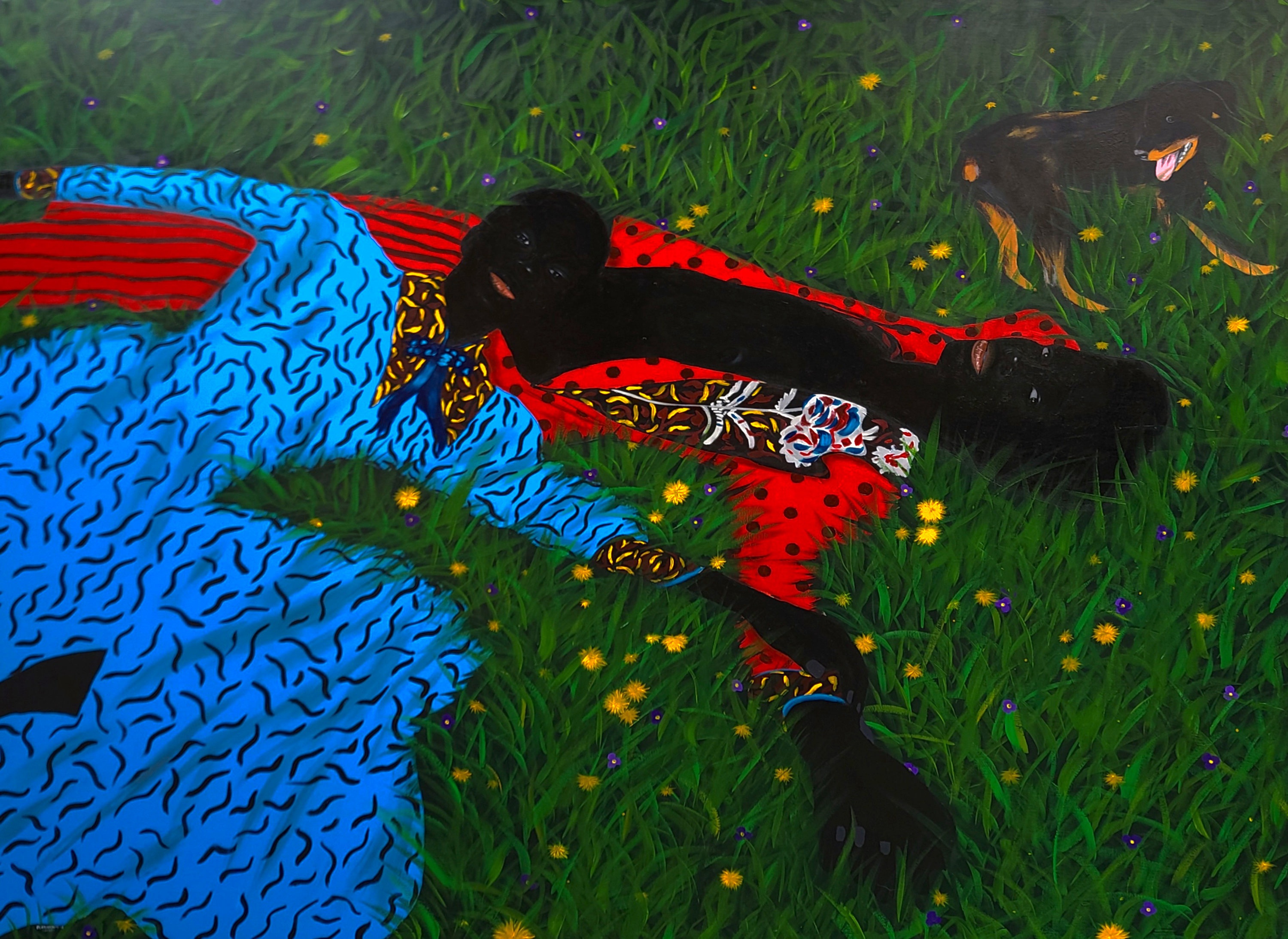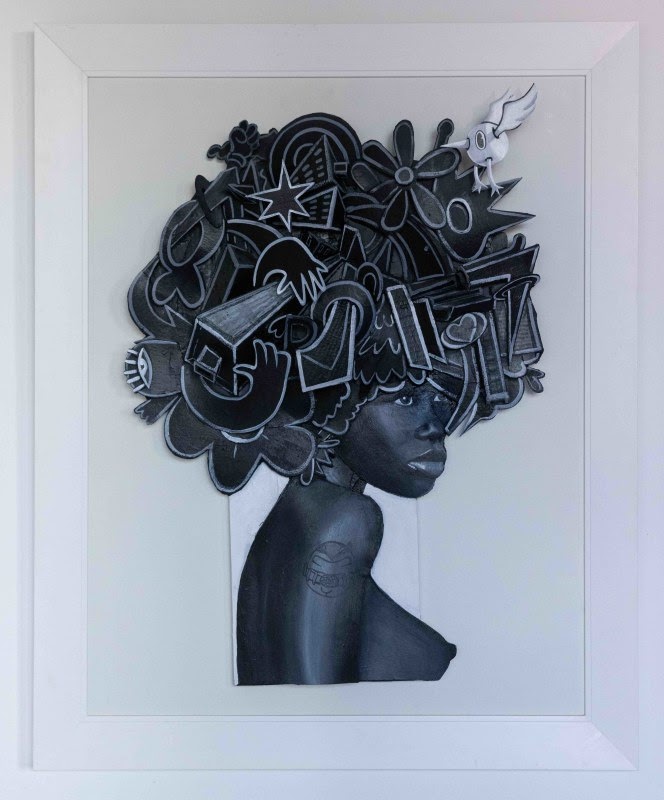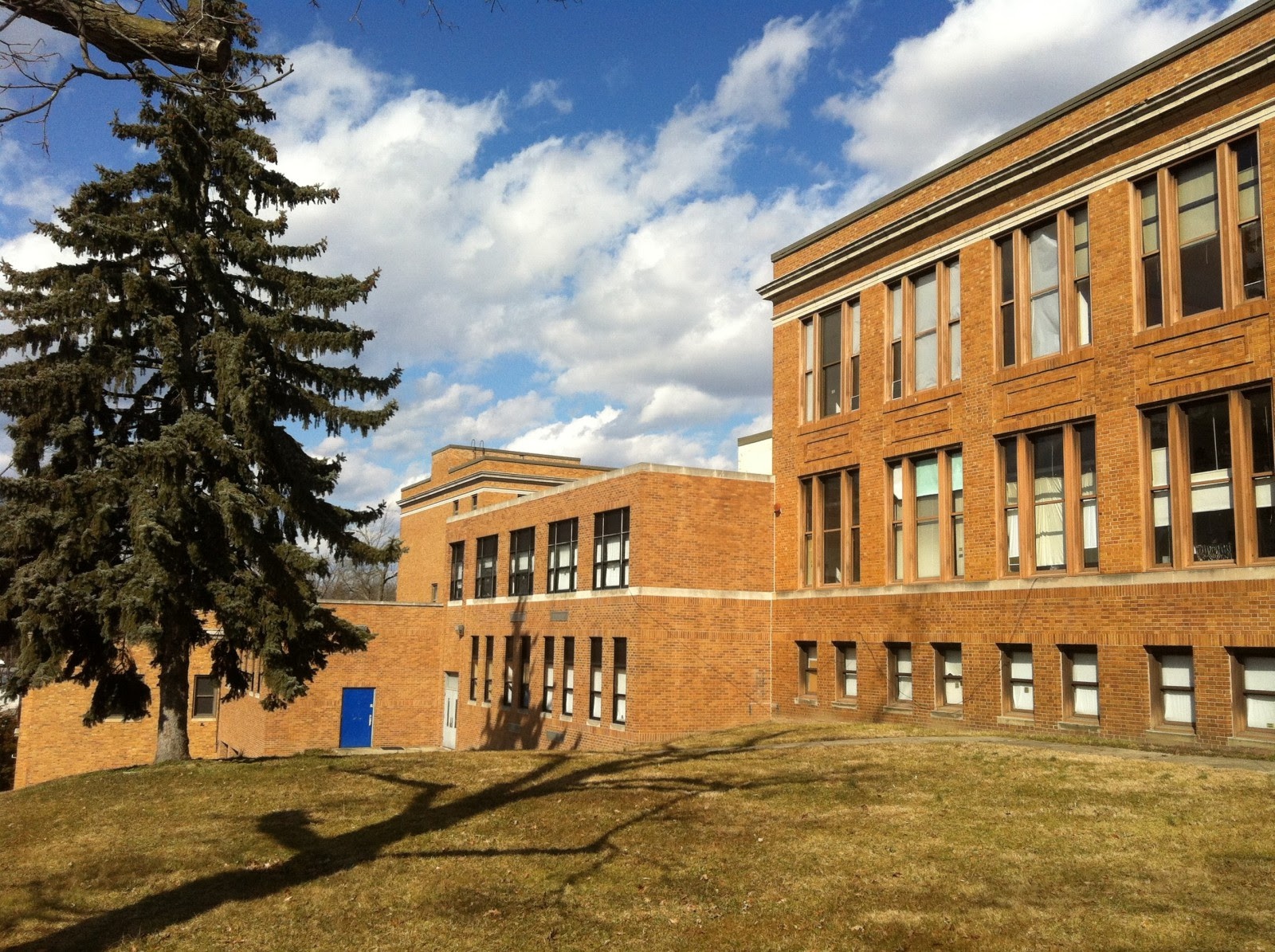Upstate Art Weekend Programming: Summer School : Beacon, NY
July 19 – July 21, 2024
Ethan Cohen Gallery at the KuBe Art Center
211 Fishkill Ave, Beacon
Special Hours:
Friday, July 19, 12 – 6 pm
Saturday, July 20, 12 – 6 pm
Sunday, July 21, 12 – 5 pm
Special Programming: Saturday, July 20, 4 - 5:30 pm
Out of Africa
Seminal Works of Contemporary Africa and Its Diaspora
July 19 – September 28, 2024
Opening Reception:
Saturday, July 20, 5.30 – 7 PM
The twelve artists included in the exhibition are a small sample of art produced by contemporary African artists and artists from the African diaspora. The works presented offer insights often unseen by American audiences. We welcome you to come view these artists and experience their work in person. Included in the exhibition are: Aboudia, Olasunkanmi Akomolehin, Armand Boua, Gerardo Castro, Òmó Oba (HRH) Adetomiwa A. Gbadebo, Innocent Nkurunziza, Catheris Mondombo, N'Dorah, Bob Dilworth, Kiné Aw, Algernon Miller, and Gonçalo Mabunda.
Olasunkanmi Akomolehin (born 1995 Lagos, Nigeria, lives and works in Berlin)
Olasunkanmi Akomolehin's body of work "People are becoming memories while still alive (More than a flower series)" illuminates the idea that memories are not only created upon the passing of a person. The series highlights how memory is an integral part of an individual's life and is essential for learning and preserving a sense of self. Akomolehin's vibrant portraits combine a dynamic use of varying pattern with an unmistakable command of compositional structure in which his figures both simultaneously emerge and dissolve. However it is Akomolehin's ability to delft address of love and romance through the affect of his sitters which transcends any continental distinction in his work.
Armand Boua (born 1978, Abidjan, Ivory Coast, lives and works in Abidjan)
While Armand Boua paints with a meticulous technique which could remind us of classical painting, the artist takes distance from the constraints of figuration. He literally deconstructs his images, scratching them and brushing them; to finally offer to the viewer the contemplation of an almost abstract scenery wherein a palpable vitality reigns, as if it were tirelessly nurtured by the agitated of the streets as a type of Décollage. Armand Boua represented the Ivory Coast in the 2022 Venice Biennale.
Gerardo Castro (1967 - 2024 born Ponce, Puerto Rico)
Gerardo Castro was an Afro-Caribbean artist whose artwork questions and expands beyond conventional societal and religious structures, creating portraits of both real and imaginary saints to look up to and watch over the marginalized. In re-imagining these structures and saints, Castro invites viewers to do the same, encouraging a dialogue about evolving traditions towards inclusivity. Castro seamlessly weaves together subjects of identity, ancestry, and lineage through the kaleidoscope of spirituality, sexuality, colonialism, power, and revolution. Castro creates constellations of marvelous glittery, unmistakably black, and emphatically brown figures in environments that are spiritually charged. His paintings are in a sense, icons, or doorways to the sacred - timeless, visual manifestations that serve as a portal into the artist's creative world. Castro depicts his subjects as icons to convey the presence of a sacred being. To have imagery that gives representation to people of color, honors, reflects, and reminds the marginalized that they too are sacred.
Òmó Oba (HRH) Adetomiwa A. Gbadebo (born, Abeokuta, Nigeria, lives and works in Minneapolis)
Òmó Oba (HRH) Adetomiwa A. Gbadebo, a Yoruba prince, utilizes his Nigerian heritage and chromatic sensibility to create abstract expressionist works laden in spirituality. Gbadebo utilizes that liberation of form to convey Yoruba sensibilities, spirituality, and rhythm in his artworks. His art practice is informed by ancestral guidance, and Afrobeat music, and is expressed in a trance-like state of creation. His fields of color, half-realized figures, and chosen objects pasted into his paintings are laden in spiritual meaning and personal and communal history. His artworks reveal a preoccupation with layers of consciousness as the predominant reality into which the figuration dissolves.
Innocent Nkurunziza (born 1986, Uganda, lives and works in Rwanda)
Innocent Nkurunziza is one of the leading artists at the forefront of the growing Rwandan art scene. Nkurunziza is the founder of the Inema Art Center, and the first Rwandan art collective. Nkurunziza is both an innovator of the local art community, as well as an innovator in his art practice. Strongly inspired by the world around him, Nkurunziza creates monumental paintings, sculptures and mixed media works using elements of nature as his medium. He paints and sculpts body parts such as feet, genitalia, and elements of landscape such as rocks by using elements of nature itself. Nkurunziza relies primarily on bark, mud, and the earth as his medium.
Catheris Mondombo (born 1992 Kinshasa, Democratic Republic of Congo, lives and works in Kinshasa)
Originally, Catheris Mondombo started out painting on canvas but was unsatisfied with the results. Mondombo began reappropriating second-hand tarpaulins, salvaging them from Congolese markets. This substrate imbued his work with a powerful symbolic dimension. It reflects the socioeconomic situation of the people of Kinshasa, and beyond that, the precariousness of the human condition. Inspired by a science fiction film, Mondombo firstly created a series of half-abstract, half-realist allegorical motifs in which astronauts are depicted. Mondombo's work also explores his country's colonial past. These artworks bear witness. The simplified shapes, the figures primarily depicted as shadows on flat tints of pure colors, have a direct intention, and the end result is especially striking as the works are in a large format. Catheris Mondombo was selected to represent the Democratic Republic of Congo in the 2024 Venice Biennale.
N'Dorah (b 1968 Cameroon, lives and works in Paris, France)
While N'Dorah is is Cameroonian of origin, she is a veteran in multiple vectors, a veteran of the Parisian creative scene, N'Dorah crafts mimetic full-size objects out of human and artificial hair. They could be animal or abstract, supernatural, anthropomorphic or deceptively decorative, unfurling in dark, knotty outpourings that deploy traditional Afro techniques of braid and weft. According to N'Dorah, "with the globalization of appearance, I try to challenge collective representations by twisting the codes and stereotypes of consumer society and its impact on self-perception". N'Dorah work invites touch, radiates tactility, as with the hair of a beloved or the hide of a wild animal.
Bob Dilworth (b. 1951, Virginia, lives and works in Providence, RI)
Bob Dilworth is a Providence-based artist whose work spans multiple media, exploring issues of identity, community, and place. Known for his richly layered artworks, Dilworth tackles race, culture, ethnicity, family, myths, folktales, and religious beliefs through metaphor and allegory. His paintings employ an aesthetic gesture towards moments in history that run parallel to current times, often intersecting and exploring hidden and deeper meanings of his experience as an African American male. His current work examines the identity of friends and family, exploring notions of home, heritage, ancestry, and generational change using decorative patterns, designs, and bric-a-brac; executed in oil and acrylic paint, spray paint, stencil, paint markers, inks, or glued, stitched, and sewn onto fabric, paper, and other surfaces. His work is a testament to his exploration of personal and collective identity, imbued with a profound sense of history and cultural heritage.
Aboudia (b. 1983, Ivory Coast, lives and works in Abidjan, Ivory Coast)
Aboudia is a celebrated artist whose work is deeply influenced by the street culture and vibrant energy of his hometown, Abidjan. Renowned for his 'nouchi' graffiti style, Aboudia draws inspiration from his childhood experiences of growing up in poverty and his early days as a street artist. His paintings are rich with imagery that reflects the intersection of his personal past and the broader future of humanity. His works feature the faces of street children, blended with ghostly tribal masks, creating a unique symbolic language that speaks to the social inequalities and historical context of his environment. Aboudia's art champions the vulnerable and innocent children living in the shadows of colonialism, globalization, and African cultural traditions. His use of bold lines and vivid colors creates a powerful visual impact, resulting in works that are both culturally specific and universally resonant. Through his complex and dynamic artworks, Aboudia provides a poignant commentary on the struggles and resilience of those on the margins of society, reimagining his early life experiences into vivid, compelling narratives. Aboudia represented the Ivory Coast in the 2022 Venice Biennale.
Kiné Aw (b. 1977, Kinshasa, DRC, works in Dakar, Senegal)
Kiné Aw is a celebrated artist whose work transcends traditional boundaries, blending the rich cultural heritage of Senegal with contemporary artistic expression. Aw's paintings and drawings explore themes of identity, community, and the power of the feminine. Kine Aw's distinctive style stems from an exploration of surrealism, cubism, and her profound dedication to portraying the female form. Aw's works, frequently inspired by "curvature" transcends mere representation, delving into the intricacies of the female psyche. Her pieces often showcase women in dynamic poses, embodying strength, grace, and a sense of self-possession. Through gesture and striking compositions, Aw challenges the conventional tension between modernity and the traditional, inviting viewers to contemplate and appreciate the diverse manifestations of feminine power.
Gonçalo Mabunda (b. 1975 in Maputo, Mozambique, lives and works in Maputo)
Gonçalo Mabunda's works evoke the collective memory of his country Mozambique, which had lived through a devastating civil war, and the residual bric-a-brac of war are the found objects that he recycles as his medium of expression. He embarked on gathering shards of national memory in the form of discarded weapons, fragments, piecing them together into sculptures. Out of that he forged a fantastical iconography derived from African fetish traditions rendered in rusting steel. He welds together menacing instruments of death, bullets, pistols, parts of Kalashnikovs, into disarming objects, deceptively aesthetic, fused to suggest a multiplicity of meanings, not least to suggest alternate uses, and indeed alternate visions of how his culture might have otherwise employed itself with ambient materials. By giving anthropomorphic forms to the objects, he not only ironically comments on the absurdity of violence that had divided his country for a long period, but also positively reflects on the resilience of African civilians through the transformative power of art. Gonçalo Mabunda represented Mozambique in the 2019 Venice Biennale.
Algernon Miller (b. 1945, Harlem, New York City, lives and works in Rhode Island)
Al Miller is a leading figure in the intellectual wing of Afrofuturist art. Educated at the School of Visual Arts (1965-67) and The New School (1967-68) during America's cultural revolution, Al Miller's Downtown art world included Happenings and Pop, Fluxus, and Warhol films, the Beat Poets along with the Afrofuturist jazz scene of Sun Ra. Deeply influenced by African studies and Afrocentric writings, Al Miller evolved what he calls a "transformationist" consciousness that synthesizes past, present, and future. Al Miller's work draws on sacred geometry, numerology, and the structures of nature, science and architecture, and he frequently references African and African-American artistic heritage, such as beading and quilting traditions. Yet, his use of new technologies traverses the so-called digital divide that associates blackness with technological disadvantage. Along with many Afrofuturist thinkers, he is conscious of a long line of "Blacks in Science," under-recognized black inventors and innovators, and he experiments with sound, kinetic energy, solar-power, 3D animation, and holography. His emphasis on light, both represented and used as an artistic medium, undermines historical associations of blackness with darkness, and reinforces Afrofuturist metaphysical concepts. Miller's major public commissions include his Tree of Hope on Adam Clayton Powell Boulevard, and the Frederick Douglass Circle at the northwest corner of Central Park, which opened in 2010. His works are in several prominent collections, and have been featured at New York's Museum of Arts & Design (MAD), the New Museum, the Whitney, The Studio Museum, the Schomburg Center for Research in Black Culture, the Boston Museum of Fine Arts, and in France at the Espace Lyonnais d'Art Contemporain, Lyon, among others.

Emil Alzamora:
Irrational Experiments
Science Room
July 19 – September 28, 2024

The Graffiti Room:
Featuring Ray Arcadio
Temporary Installation

For this exhibition, The KuBe Art Center highlights the work of Ray Arcadio. Born in the Dominican Republic and now based in New Jersey, Arcadio explores the significance of iconography and symbols on our psyche. His work includes paintings, drawings, and sculptures that blend pop imagery with street art elements. By layering "tribal/urban" abstractions over classical forms, Arcadio addresses the profound impact of American culture on his Caribbean heritage. His art is visually complex, playful, and thought-provoking. With a background in street art, Arcadio has numerous murals around the East Coast accredited to him. He is a founding member of Jersey City's Artfux, a culture jamming collaborative group who were pioneers in street art.
About The KuBe Art Center
Established in 2011, The KuBe (Kunsthalle Beacon) is a 127,000-square-foot art center located in Beacon New York at the site of a former high school. The KuBe Art Center includes the Joan Lebold Cohen and Jerome A. Cohen Center for Visual Arts, The Chongmao and Zheng Ruyu Theater, hosts distinguished artist lectures, concerts, films, theater, and dance projects. Additionally, The Kube provides 48 artists' studios and commercial office spaces which have hosted a variety of community-based businesses ranging from puppeteers to political campaign headquarters. In 2023 the KuBe Art Center received The Arts Mid-Hudson Arts Organization Executive Arts Award. We wish to extend an invitation to you to discover our emerging incubator and enjoy exhibitions of internationally acclaimed artists and our galleries.

ABOUT ETHAN COHEN GALLERY
From the very beginning, Ethan Cohen Gallery has represented a pioneering blend of both emerging and internationally renowned artists. Many of the emerging artists have now become household names. Mr. Cohen has steered the gallery to occupy a distinct place in contemporary art as a center of innovation across disciplines and countries. Today Ethan Cohen Gallery has three gallery locations, two in Chelsea in the heart of New York City and the other in Beacon, New York.
Ethan Cohen first founded his gallery in 1987 as Art Waves/Ethan Cohen in SoHo, New York. A groundbreaker in the field of contemporary Chinese art, Ethan Cohen was the first gallerist to present the Chinese Avant-Garde of the 1980s to the United States. Ethan Cohen Gallery today represents a diverse global mix of contemporary and post-war contemporary art, specializing in contemporary Asian art and contemporary African art.
Press Contacts:
Dan Schwartz
danschwar@gmail.com
Lara Kamhi
lara@ecfa.com
ecfa@ecfa.com



